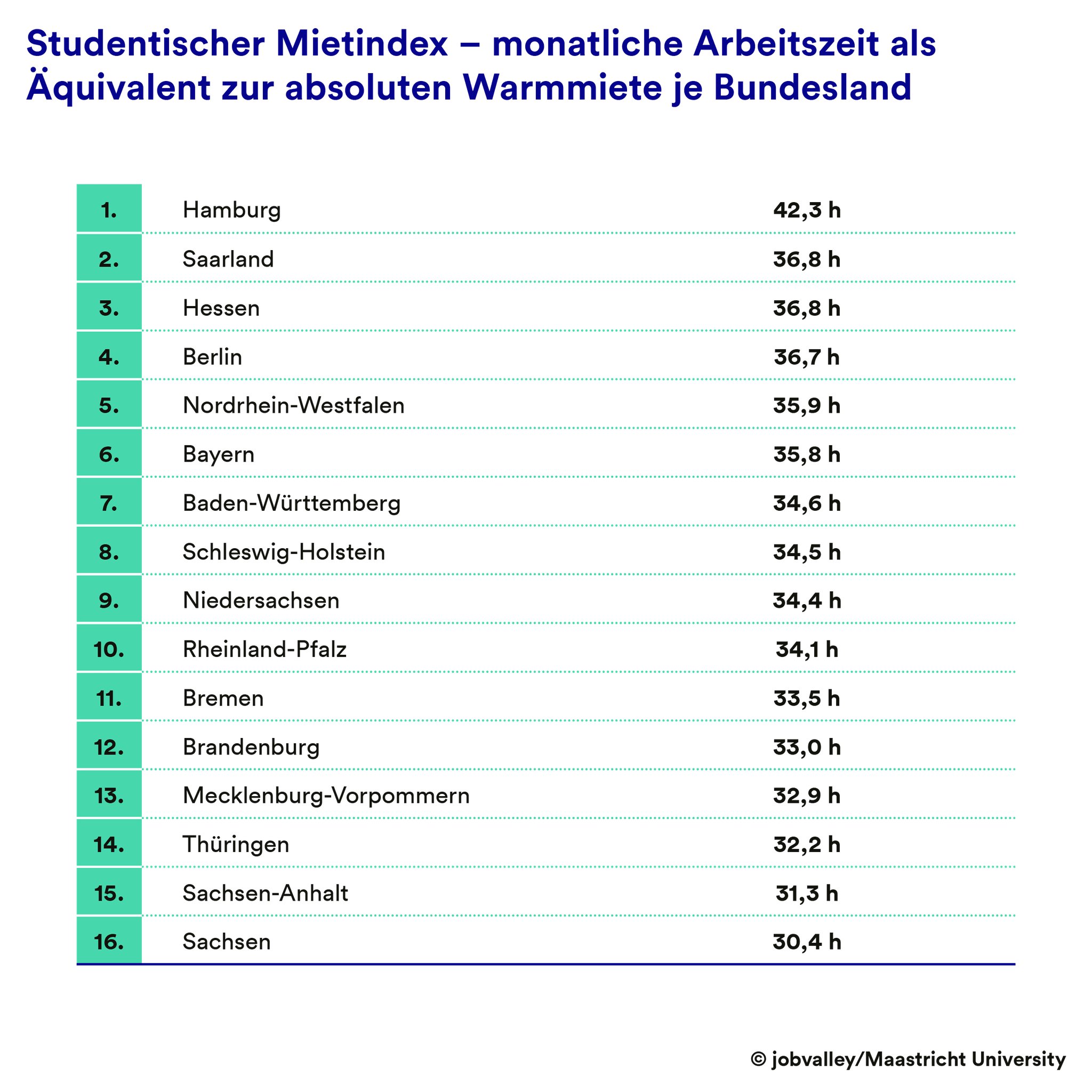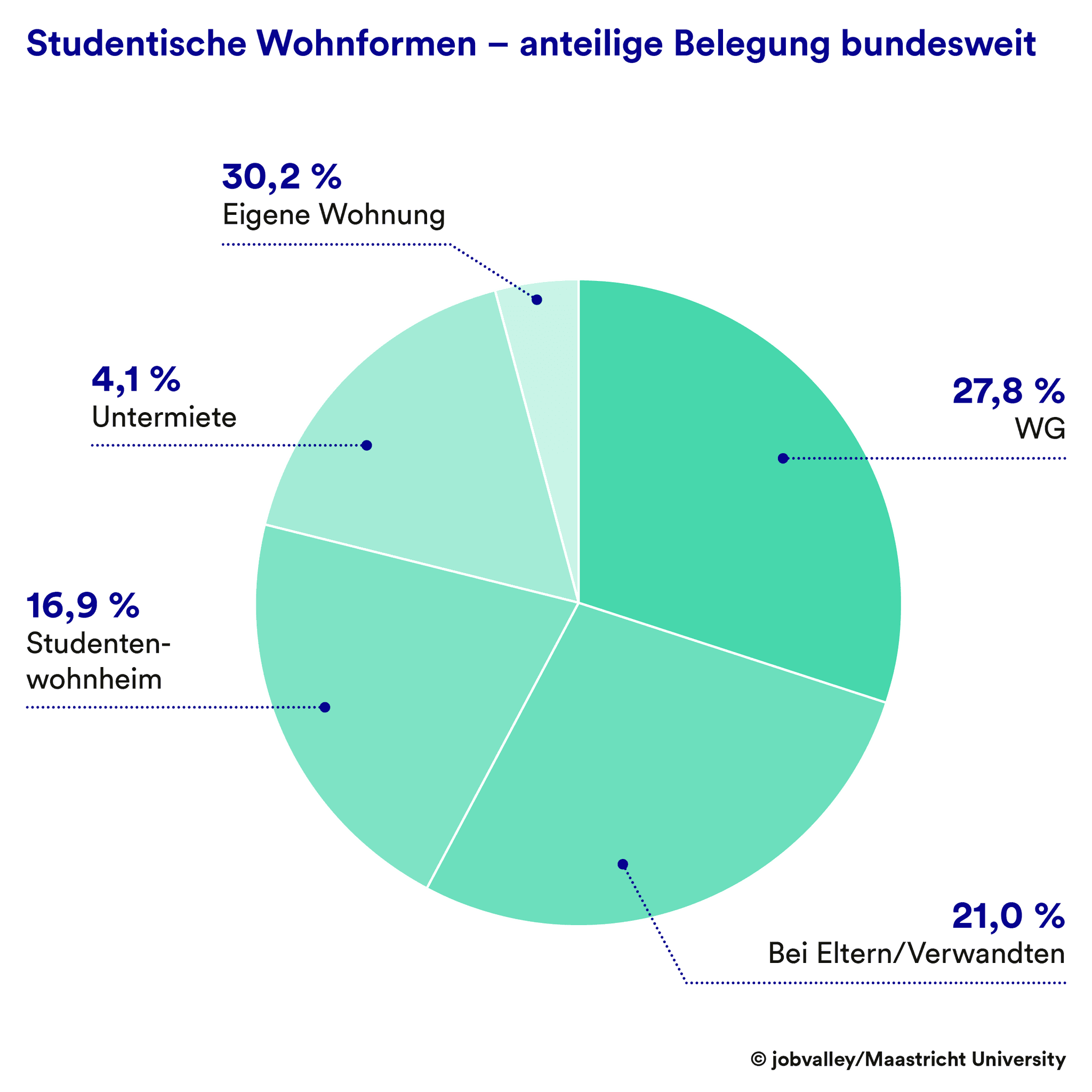While the summer semester for students at most universities of applied sciences already began in March, lectures for university students often don't start again until the end of April. If you weren't lucky enough to find a place to live last winter semester, the hunt for a room in a shared apartment, an apartment or a place in a student hall of residence is about to begin again. There is good news and bad news: Rents have risen once again, but on average students still don't have to spend more hours at a part-time job to pay the rent. These findings emerge from our current study series, Fachkraft 2030.
Rising rents, but also rising wages
In many regions, quite high average rental costs are offset by equally high hourly wages, such as in Bavaria. In the warm rent ranking, it is the third most expensive federal state - but performs significantly better in the rent index. This means that students here have to work fewer hours per month on average to pay their rent than in Hamburg, Saarland, Hesse, Berlin or North Rhine-Westphalia.
In Saarland, on the other hand, comparatively low rents are offset by a very poor average hourly wage. While Saarland's student wage level of €9.01 in 2013 was still close to the national average (9th place in the state comparison), the most recently measured €11.11 means the state shares last place - together with Thuringia.

The shared apartment is no longer in first place
As a student, you have to live in a shared apartment, don't you? The WG has become famous through the special form of the commune in the 60s and 70s, up to today's partly purpose-built, shared apartment. For the first time since the Professional 2030 surveys began (2012), the WG is now no longer in first place among housing types. The majority of students (30.2%) now live in their own apartments - which of course does not (always) mean a condominium, but usually simply living alone in a residence.





